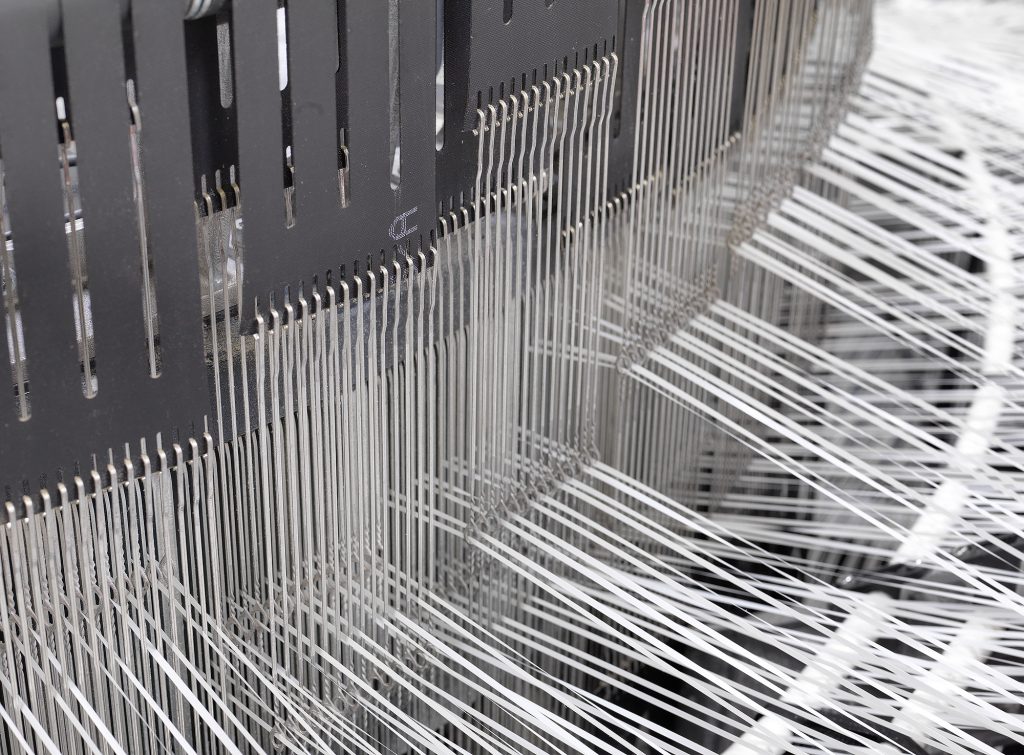
A Dialogue with Ray, CEO of VidePak:
Client: “We need packaging solutions that balance durability, eco-friendliness, and adaptability for industries like agriculture and construction. How do multi-wall woven bags meet these demands?”
Ray: “Multi-wall woven bags combine layered polypropylene (PP) fabrics with advanced coatings, achieving tensile strengths up to 60 N/cm² while reducing carbon footprints by 30%. At VidePak, our Starlinger extrusion and weaving systems enable precision manufacturing of 5-layer bags, ensuring compliance with EU 2023/1804 sustainability mandates. Let’s explore how our technology redefines bulk packaging.”
1. The Evolution of Multi-Wall Woven Bags
Multi-wall woven bags, characterized by layered PP fabrics laminated with PE or BOPP coatings, have become critical for industries requiring high-load capacities (up to 2,500kg) and environmental resilience. These bags offer moisture barriers as low as 0.05 g/m²/day and UV resistance exceeding 2,000 hours of exposure, outperforming single-layer alternatives in harsh climates.
VidePak’s global production network—powered by 100+ circular looms and 30 lamination machines—produces 50 million bags annually. The integration of Austrian Starlinger technology ensures ±0.2mm precision in layer alignment, critical for meeting ISO 21898 standards for hazardous material transport.
2. Manufacturing Processes: Impact on Durability and Flexibility
2.1 Extrusion: The Foundation of Material Integrity
Extrusion transforms raw PP pellets into uniform filaments. VidePak’s 16 extrusion lines operate at 250°C, optimizing polymer chain alignment to achieve:
- Tensile Strength: 50–60 N/cm² (vs. 30–40 N/cm² for conventional extrusion).
- Thermal Stability: Withstands -30°C to 80°C without brittleness.
Case Study: A Vietnamese rice exporter required bags resistant to monsoon humidity. VidePak’s co-extrusion process (PP + 20% recycled content) reduced moisture absorption by 40%, complying with ASTM D5635-19.
2.2 Tape Drawing (Fibrillation): Balancing Strength and Flexibility
Tape drawing determines filament thickness (denier) and uniformity:
- Fine Denier (≤900 denier): Enhances weave density (120 threads/inch) for puncture resistance.
- Coarse Denier (≥1,200 denier): Improves load-bearing capacity but reduces flexibility.
| Denier | Tensile Strength (N/cm²) | Elongation at Break (%) |
|---|---|---|
| 900 | 55 | 18 |
| 1,200 | 65 | 12 |
VidePak’s variable denier technology allows custom profiles—e.g., 1,000 denier for construction debris bags needing 60 N/cm² strength and 15% elongation.
2.3 Weaving: Structural Optimization
Circular looms interlace tapes into fabrics with controlled porosity:
- Tight Weaves (140 threads/inch): Block 95% of dust particles, ideal for powdered chemicals.
- Loose Weaves (100 threads/inch): Allow 50 L/m²/s airflow for breathable grain storage.
Starlinger’s CX6 looms achieve weaving speeds of 200 rpm, reducing production costs by 20% compared to traditional shuttle looms.
3. Sustainability and Customization: VidePak’s Dual Focus
3.1 Eco-Conscious Material Innovations
- Recycled PP Integration: 30% post-industrial recycled content, reducing virgin plastic use by 800 tons/year.
- Solar-Powered Production: VidePak’s 2MW rooftop solar array cuts CO2 emissions by 1,200 tons annually, aligning with RE100 goals.
3.2 Tailored Solutions for Diverse Markets
| Industry | Key Requirements | VidePak’s Customization |
|---|---|---|
| Agriculture | Breathability, UV resistance | Micro-perforated BOPP lamination |
| Construction | Puncture resistance (≥45 N) | Kevlar®-reinforced seams |
| Chemicals | Static dissipation (≤10⁹ Ω) | Conductive carbon-black coatings |
Example: For a German cement producer, VidePak engineered 5-layer bags with aluminum foil interlayers, reducing moisture ingress by 70% and achieving EN 15512 certification.
4. Regulatory Compliance and Cost Efficiency
4.1 Global Standards Alignment
| Region | Standard | VidePak’s Certification |
|---|---|---|
| EU | EN 13432 | 100% recyclable PP |
| USA | FTC Green Guides | Non-toxic inks, ≤1ppm Pb |
| Asia | China GB/T 21661 | Anti-mold additives |
4.2 ROI Analysis
- Material Savings: Recycled PP reduces costs by $0.15/bag.
- Logistics Optimization: Standardized 90cm x 120cm bags lower palletization costs by 18%.
5. FAQs: Addressing Industry Pain Points
Q1: How do multi-wall bags prevent chemical degradation?
A: PE liners (50–100µm) resist acids and solvents, tested per ISO 175 for 90-day exposure.
Q2: Can these bags withstand repeated use in construction?
A: Yes. 3-layer PP fabrics (150 g/m²) endure 20+ cycles, certified under ASTM D5265.
Q3: What’s the lead time for custom designs?
A: 12–15 days for MOQs of 10,000 units, leveraging Starlinger’s automated workflows.
6. Future Trends: Smart and Circular Solutions
- RFID Integration: Track real-time load conditions via IoT platforms.
- Bio-Based PP: 40% plant-derived resins, targeting Cradle-to-Cradle Gold by 2027.
External Resources:
- Explore advanced multi-layer solutions in Multiwall Laminated Woven Bags: Safe and Versatile Packaging Solutions.
- Learn about sustainability practices in Sustainable Practices with FIBC Bags.
Conclusion
Multi-wall woven bags are redefining industrial packaging through layered durability and ESG-driven innovation. VidePak’s integration of Starlinger precision and circular economy principles positions it as a global leader, transforming logistical challenges into opportunities for efficiency and environmental stewardship. By adopting these solutions, industries can achieve regulatory compliance, cost savings, and brand differentiation—proving that advanced packaging is the cornerstone of a sustainable future.